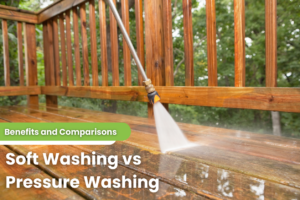Every homeowner dreads the discovery of mold in their house, especially attic mold, which can often go undetected. This post will discuss everything you need to know about mold in the attic, from its causes to mold removal procedures.
Understanding Mold
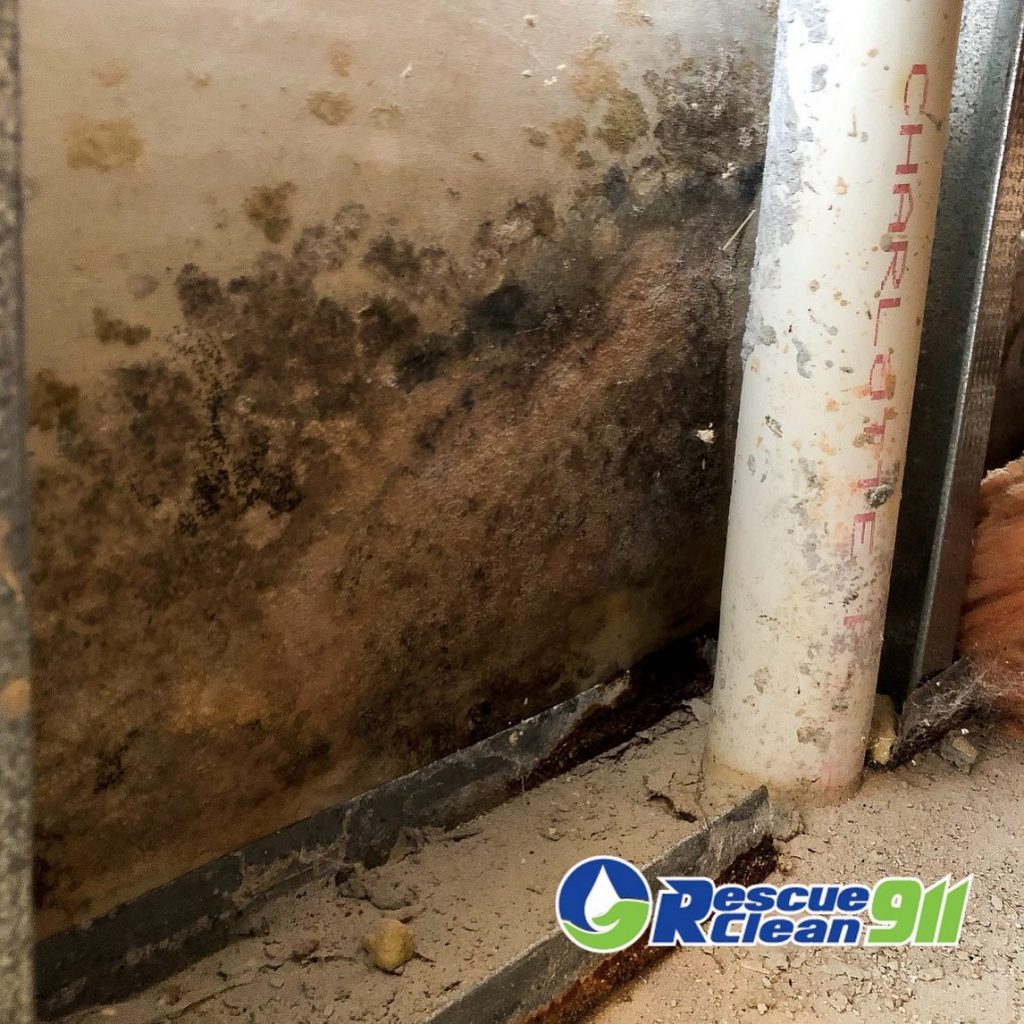
Mold is a type of fungus that can grow in different areas of your home. However, one the most concerning types is attic mold. Various kinds of mold, such as black mold and white mold, can develop in your attic, which can release mold spores into the air, contributing to mold growth in other areas of your home.
Causes of Attic Mold
Mold growth in the attic can be a silent menace that every homeowner must be aware of. As these organisms thrive in damp environments, understanding the causes can help in the early detection and prevention of attic mold.
Moisture: The Breeding Ground for Mold
One of the primary factors contributing to mold growth is excess moisture. This can stem from multiple sources. High humidity in the attic space is a common factor. When the moisture level in the air increases, the chance for mold to develop also rises.
Moist air can originate from the living spaces of the home, creeping up into the attic. Appliances like dryers or bathroom fans can put out humid air, which can make its way into the attic if not vented properly. The air then condenses on the cooler surfaces of the attic, contributing to the overall moisture content.
Roof Leaks: A Silent Contributor
Problems like roof leaks can also significantly contribute to the moisture content in the attic, leading to mold. A roof leak can allow water to seep into the roof sheathing and attic sheathing, causing these structures to become damp.
Over time, these damp conditions can promote mold growth. In some cases, the water damage may be hidden, with the roof leak being small and the water slowly seeping into the attic structures, going unnoticed until the mold problem becomes severe.
Ventilation: A Crucial Factor
Poor ventilation in the attic can trap this moist air, contributing to an increase in the moisture level. A lack of adequate ventilation can create a stagnant environment where warm, moist air is trapped, providing the perfect conditions for mold to grow.
The design of many attics includes ventilation systems such as a ridge vent, gable vent, soffit vent, and eave vents. However, if these vents are blocked, insufficient, or poorly installed, they might not provide the necessary airflow to keep the attic dry.
Blocked soffit vents, for example, can prevent the intake of fresh, cooler air. Meanwhile, an inadequately sized or blocked ridge or gable vent can hamper the exhaust of warm, moist air. The air then condenses and increases the moisture level in the attic space, aggravating the mold problem.
Consequently, attic mold issues often highlight a larger issue with ventilation in the attic. Addressing the underlying cause – be it high humidity, roof leaks, or poor ventilation – is crucial in solving and preventing mold growth.
Dangers of Attic Mold
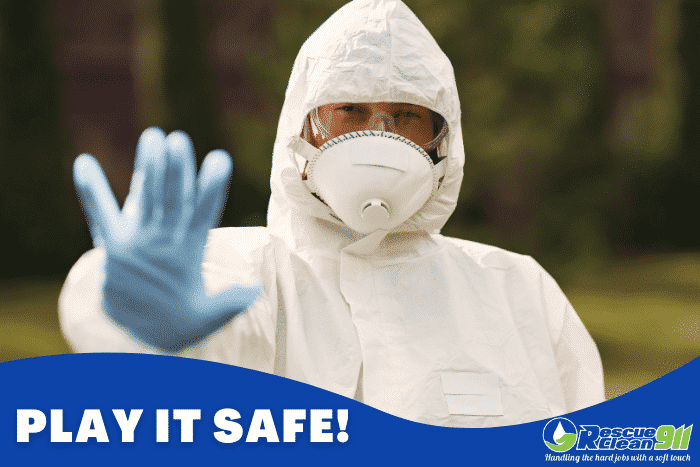
Often hidden from daily view, attic mold is a silent threat that can have serious implications for both the health of your family and the structural integrity of your home. Understanding these dangers can help underscore the importance of early detection and proper mold remediation.
Health Hazards of Mold Exposure
Exposure to mold spores, particularly for prolonged periods, can trigger a range of health issues. The most common are allergy-related symptoms, such as sneezing, itchy eyes, a runny nose, or a skin rash. Individuals with respiratory conditions or compromised immune systems are particularly vulnerable and may experience more severe reactions.
Certain types of molds, like black mold, are particularly dangerous. Prolonged exposure can lead to serious health problems, such as persistent headaches, difficulty breathing, and chronic fatigue. In some extreme cases, long-term mold exposure can lead to neurological issues and even mold-induced asthma.
Impact on Home Structure and Energy Efficiency
Beyond health concerns, an unchecked mold problem can wreak havoc on the structural elements of your home. Mold growth can lead to water damage, weakening the structural integrity of your roof sheathing and attic sheathing. Over time, this can compromise the stability of your home and lead to costly repairs.
Mold can also affect the insulation in your attic. Moisture from mold can saturate the insulation, reducing its effectiveness and, in turn, your home’s energy efficiency. This can lead to increased energy bills as your heating and cooling systems work harder to maintain a comfortable indoor temperature.
Attic mold can also negatively influence your home inspection results. This can be a significant factor if you plan to sell your home or apply for homeowner’s insurance, as some insurance companies might not cover mold damage, especially if it’s due to lack of maintenance or poor ventilation.
Identifying Mold in Your Attic
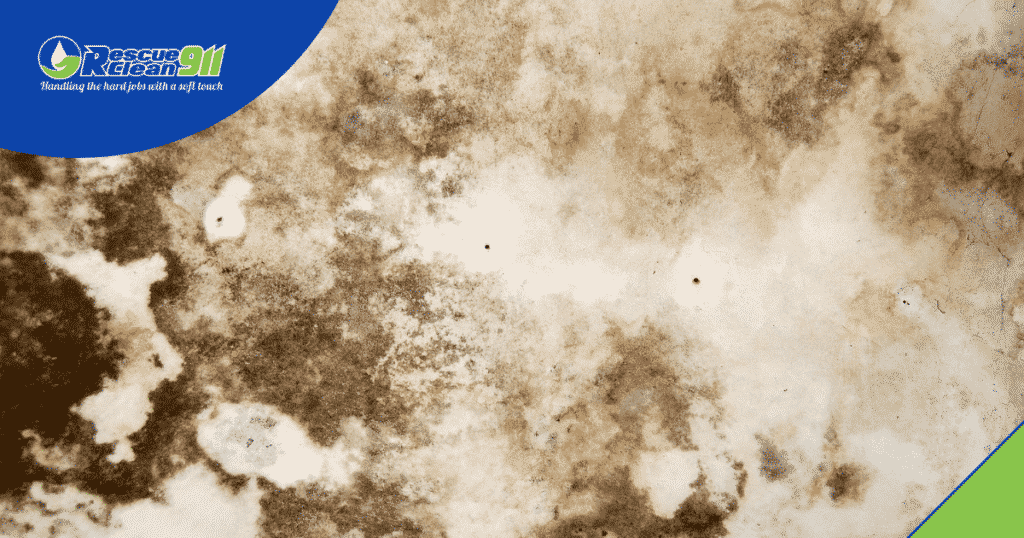
Detecting attic mold growth at an early stage is crucial for limiting damage and simplifying the mold removal process. Familiarizing yourself with the tell-tale signs can help you stay one step ahead of this uninvited guest.
Signs and Symptoms
One of the first signs homeowners often notice is a musty smell. This distinctive odor is a key indicator of mold presence, even when the mold isn’t visible. If you detect such a scent coming from your attic space, it may be time to look for other signs of mold growth.
Visually, attic mold may manifest as discolored patches or spots on your attic sheathing. Depending on the type of mold, this discoloration could vary from black and green to white and orange. Black mold and white mold are among the most common types found in attics.
You may also notice discoloration or signs of water damage on the ceilings below the attic, which can hint at a mold problem.
Professional Home Inspection: When in Doubt, Check it Out
While these signs can alert you to the presence of mold, the most accurate way to identify and assess the extent of mold is through a professional home inspection.
A certified home inspector or mold removal specialist has the knowledge, experience, and tools to conduct a thorough examination of your attic space. They can look beyond the obvious and find mold that might be hiding in hard-to-reach corners or within your insulation.
The inspector will also measure the moisture level and humidity in your attic to identify any underlying issues causing the mold. They can then provide a comprehensive report detailing the type of mold, its extent, the potential health risk, and the required mold remediation plan.
Attic Mold Removal
Removing mold should be a priority once it’s identified and a mold removal specialist can effectively handle the mold remediation process. You may be tempted to try and tackle the mold yourself, but it’s a safer bet to rely on the experts. Professional mold remediators have the proper equipment, protective gear, and knowledge to eliminate and restore the damage from your mold problem completely and efficiently.
Ensure that the moisture problem causing the mold is addressed to prevent recurrence. If a roof leak is the issue, it must be fixed immediately. Similarly, if inadequate attic ventilation is contributing to high moisture levels, installing the right vent can help.
Preventing Mold in Your Attic
Proactive steps can help prevent mold from becoming a problem in your attic. Proper ventilation is key to keeping your attic space dry and preventing mold spores from thriving. Ensure your ridge vent, soffit vent, and gable vent are functioning well, especially during winter months.
Regularly checking for roof leaks and addressing excess moisture can also keep mold at bay. Home inspectors recommend checking areas around light fixtures, smoke detectors, and bathroom fans as they can be conduits for moist air from living spaces into the attic.
In addition, redirecting exhaust fans and dryers outside rather than into the crawl space or attic can help reduce humidity.
Insulation is another key area to focus on. Good quality insulation can reduce condensation, a common cause of mold growth.
Closing Thoughts
Mold in your attic is a serious issue that needs immediate attention. From identifying the presence of attic mold to undertaking mold removal, homeowners need to be proactive in handling the situation. While mold remediation can be handled by a professional, taking preventive measures can save you time and costs in the long run. So, inspect your attic regularly, keep a check on moisture levels, and ensure adequate ventilation to prevent mold.
Remember, every mold problem can be tackled with the right steps and professional guidance. So, don’t let the mold spores win. Take the first step today towards a clean, mold-free attic.
Get Expert Help with Your Attic Mold Problem
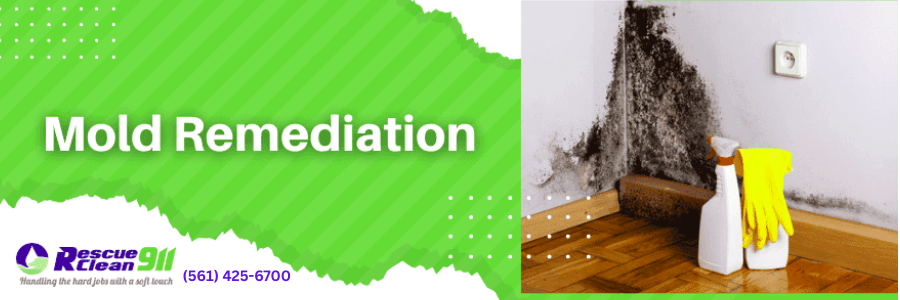
When it comes to mold remediation, rely on the best. Rescue Clean 911 is your trusted partner in combating attic mold growth. With our vast experience in mold removal, we understand the unique challenges that homeowners face in South Florida.
We specialize in mold identification, removal, and prevention. Our team of highly trained mold removal specialists uses the most advanced techniques and equipment to ensure a thorough job. We don’t just treat the symptoms; we address the root cause of the mold problem, ensuring that your attic remains mold-free for the long term.
Rescue Clean 911 can help keep your home safe and your mind at ease. Don’t let mold spores take over your home and threaten your family’s health. Contact us today, and let’s get started on a strategy to meet the unique needs of your home.

